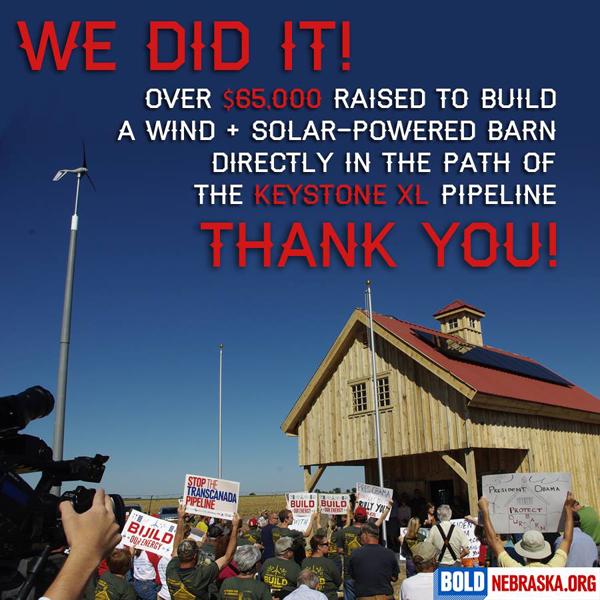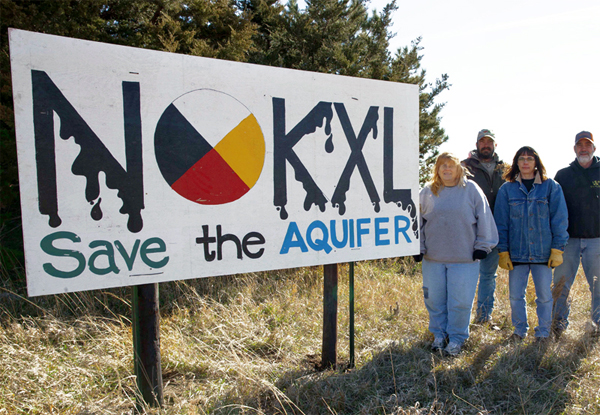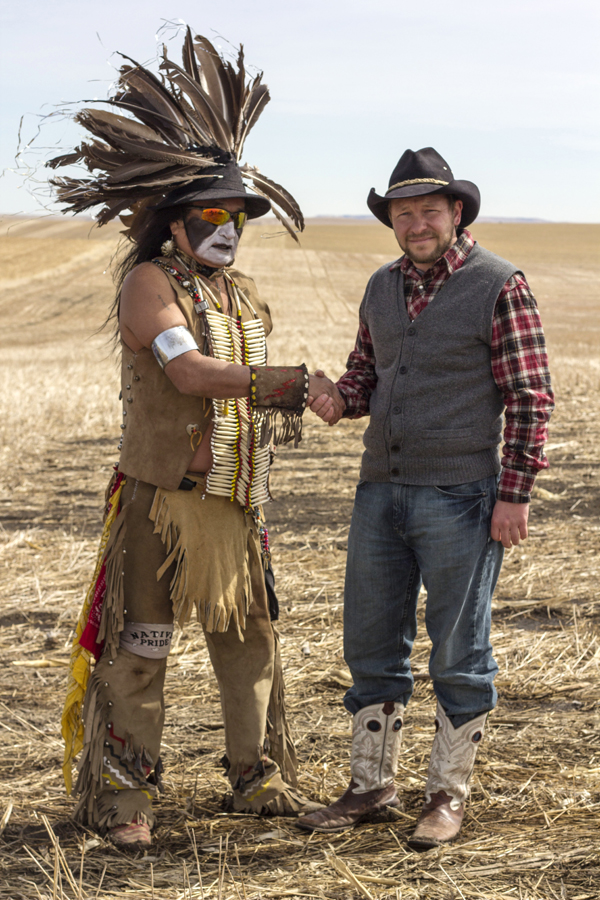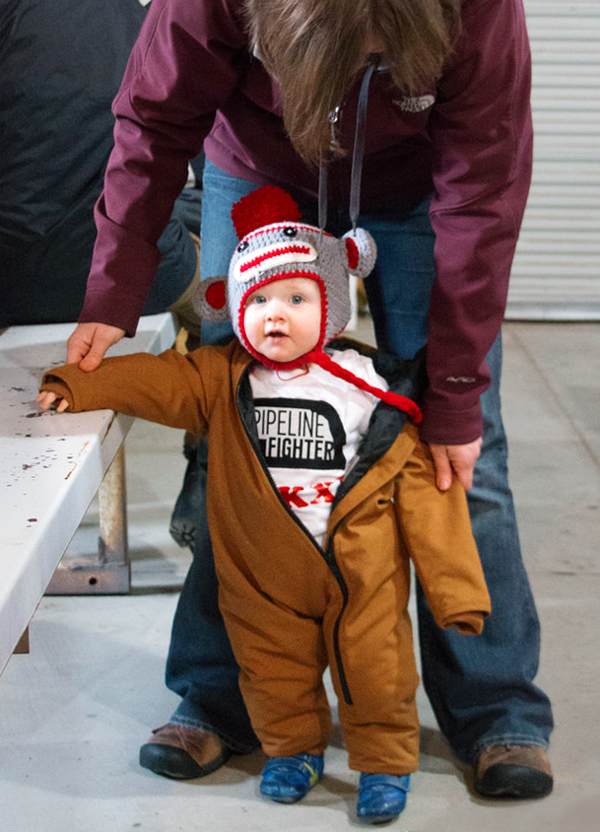This article is from our associated project, CreativeResistance.org
Bold Nebraska is a grass-roots movement of families, farmers, cowboys, Indians and community members standing up to the energy extraction industry, resisting the Keystone Pipeline and protecting the Earth and the People using creative and imaginative tactics.
The Website says: “Our state is currently dominated by one political voice– conservative. And it’s not the conservative voice many of us grew up with in our families. The conservative voice in our state is now dominated by far-right ideas and policies that are more about protecting big business, not fighting for our families.”
“If you look back in our Nebraska history, you see a diverse set of political beliefs. You see room for all of us to build on each others ideas to get things done. We think there is a role for common-sense government and we need more progressive, independent and moderate voices in our state’s politics.
Nebraskans are bold. We are pioneers. We are reformers. We are independent. Bold Nebraska is setting out to change the political landscape and restore political balance.”
Like Bold Nebraska on Facebook
The “Build Our Energy” Barn
From Mark Hefflinger on the Bold Nebraska site: “During the summer and fall of 2013, Nebraskans stood up for their future by literally building the clean energy future we need. [They] challenged Big Oil to show their true stripes by constructing a wind turbine and solar-powered barn immediately in the path of the proposed pipeline, using creative tactics to resist pipeline construction before it begins.
If President Obama approves Keystone XL, he’ll now have to tear down clean and locally-produced energy to make way for dirty and foreign tarsands.”
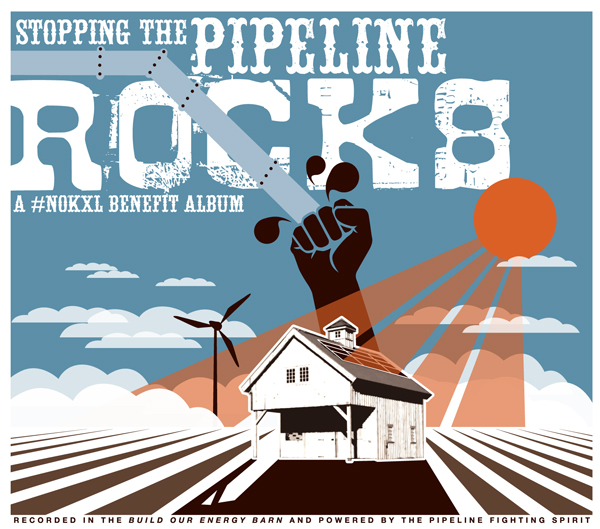
The first project being produced out of the Build Our Energy barn is “Stopping the Pipeline Rocks” an album powered by clean, local solar and wind energy. Hear Nebraska, a nonprofit cultural organization that promotes music and arts, and Lincoln-based Red Rebel Media is bringing together artists for recording sessions and concerts in the Build Our Energy barn. Proceeds from album sales will fund the fight against TransCanada’s Keystone XL pipeline, and support more clean energy projects like the Build Our Energy barn.
Bold Billboards and Postcards
Around the same time as the barn-raising, volunteers and art students from Nebraska Wesleyan University were designing and hand-painting #NoKXL billboards for Nebraska farmers and ranchers to place on their land. Bold’s Mary Anne Andrei took beautiful photos of the landowners and their new outdoors artwork. (Click on each photo in this slideshow to find out more about the Nebraskan(s) pictured.) Bold billboards photos on Creative Resistance here.
Bold Nebraska turned all the photographs into postcards so that you can help bring these Nebraskans’ stories, as well as your own #NoKXL message, to key opinion leaders and decision makers in the Keystone XL pipeline approval process. For a $10 donation, Bold Nebraska will send you 4 pre-addressed postcards. Just add your own personal message and a stamp, and drop them in the mail to D.C.
Cowboy and Indian Alliance
A group of ranchers, farmers and tribal communities from along the Keystone XL tarsands pipeline route, called the Cowboy and Indian Alliance, will, on April 22nd, ride into Washington DC on horseback and set up camp near the White House to tell President Obama to reject the pipeline. Reject and Protect is the name of this action. Reject the pipeline; protect the Earth and the People.
Four days later, on Saturday April 26th at 11 AM, thousands of people will join them on the National Mall (between 7th and 9th Streets) to stand together for a final message that the Keystone XL pipeline and the tar sands must be rejected to protect this, and future generations. Join the action!
During the gathering, participants will be asked to add their thumbprint to a painted tipi. Farmers, ranchers, tribal leaders and refinery community members who will be directly impacted by Keystone XL and the tar sands, and who have pledged to lead the resistance should it be approved, will speak.
From the event website: “Then, those leaders will carry our painted tipi to present to President Obama, with thousands of people standing behind them. This tipi will represent our hope that he will reject the pipeline, and our promise that we will protect our land, water and climate if he chooses to let the pipeline move forward.
Once the tipi is delivered, we’ll return to the encampment in song and make our pledge to continue resistance to the pipeline should it be approved.
The next day, there will be an interfaith ceremony to close the camp. The moral argument for action could not be clearer, with our future on the line.”
This is not the first time Cowboys and Indians have come together to stop projects that risk our land and water. In the 80s, they came together to protect water and the Black Hills from uranium mining and risky munitions testing. In the American imagination, cowboys and Indians are still at odds. However, in reality, opposition to the Keystone XL tar sands pipeline has brought communities together like few causes in our history. Tribes, farmers and ranchers are all people of the land, who consider it their duty as stewards to conserve the land and protect the water for future generations.

Photo by Matt Sloan for Bold Nebraska
Lakota Spiritual Camps in the Proposed Path of KXL
In late March the Rosebud Sioux Tribe set up a prayer camp, on rural land just over the Nebraska border near Mission, S.D. The Keystone XL pipeline is set to cut through this area, which contains historical and cultural tribal artifacts. Farmers and ranchers from the Cowboy & Indian Alliance joined the event as a prelude to the Reject and Protect Washington D.C. camp and rally.
The Spirit Camp is known as “Iyuksan”, “the turn.” It is named for one of the many turns the pipeline makes inside the 1868 boundaries of the Great Sioux Nation. Rosebud Sioux Tribal Councilman, Russell Eagle Bear, said “we aim to turn the pipeline around here.”
The camp is open to anyone to visit and visitors may bring their own tents and cold weather sleeping gear in the event that no tipis are available. The camp coordinators continue to provide daily updates on their Facebook page, Oyate Wahacanka Woecun. The camp occupants have firmly established that they are ready, willing and capable of sustaining the camp for “the long haul.” See ShieldthePeople.org to learn more and donate.
Oyate Wahacanka Woecun, a group created to address the threats posed by the KXL pipeline is raising money to maintain the camp as they stand up to protect the Land, Water, Resources and People of the Rosebud Sioux Tribe. Please visit and share their Indiegogo campaign.
In the description for this video are these words: “The XL pipeline is the current leading threat to the survival of the planet and these spiritual tipi camps are our best opportunity to stop it. Lakota men and women are putting their lives on the line for all of us, and they need your help.
Imagine the challenges facing those willing to risk everything to do what is so necessary. Food, medical attention, fuel, communications, transportation, security and support for the families are all desperately needed and these sacrifices are occurring in some of the most economically deprived areas of the United States!”
Another Spirit Camp Now In Progress, With More to Come
On April 11, Chief Arvol Looking Horse blessed the site of the second Lakota Spiritual Camp, currently being established in the path of the Black Snake (KXL tarsands pipeline). This is the Pte Ospiye Spiritual Camp in Bridger, South Dakota. See Censored News to learn more and donate.
“Campers are welcome to come. We ask that you come prepared to work and to be responsible. The nights get cold. Bring a tent, warm sleeping roll and remember it is expected to get wet and cold.”
Activist Training Camps
Moccasins On the Ground provides essential activist training, covering blockades, strategic media, street medic training, legal rights re civil disobedience, solidarity and alliances, human rights and the Declaration on the Rights of Indigenous Peoples, Lakota sacred teachings on water, and more.
The next training camp will be held April 25, 5 p.m. through April 27th on the Pine Ridge Homelands. Go here for more info or to donate to the transportaion fund.

Artist John Quigley, partnering with the Cowboy and Indian Alliance, has used the earth as a canvas to send President Obama a direct #NoKXL message. The world’s largest crop art installation has been created on land in Neligh, Nebraska on the Ponca Trail of Tears that would be traversed by the Keystone XL pipeline. The design was inspired by tribal artist Richard Vollaire of the Tongva Nation.
A community BBQ on April 13 celebrated the unveiling of the artwork and served as a “Bon Voyage” party for a caravan delivering tipis and Nebraska families’ well water from the Ogallala Aquifer to Washington, D.C. for the upcoming Reject and Protect action.
The massive crop design of a cowboy and Indian warrior includes key images of water and a hashtag made of arrows. A sun with seven rays depicts the tribal tradition of protecting seven generations and the renewable energy that farmers, ranchers and tribes want to see on their land rather than a tarsands pipeline that risks their water.

Art Tanderup dug the image lines with his tractor following the direction of flags planted by volunteers and artistic on-the-ground direction of John Quigley.
Art and Helen Tanderup’s farm land is in Custer Township in Antelope County Nebraska. The land has been in Helen’s family for 100 years and they continue to honor the family’s ethic of good stewardship by not tilling the land and using sound water conservation and farming techniques. They hope to pass the farm on to their two children and grandchildren and fear that the KXL pipeline threatens their family legacy. Their land is directly on the Ponca Trail of Tears and the proposed route crosses this sacred site.
“The soil is very sandy here” says Art Tanderup, “any leak would leach into the Ogallala Aquifer contaminating our water without any concrete plan to clean up the pollution. With this crop art we are literally drawing a line in the sand and asking President Obama to stand with our families.”
Jane Kleeb of Bold Nebraska put the action into context, “President Obama has deep family roots in the Heartland and was adopted into a tribal family. It’s too easy in Washington to only think about politics. Our families may not contribute millions to candidates, but we do put food on America’s table and can only do that with clean water that is tarsands-free.”
The artist, John Quigley, founder of Spectral Q, is internationally known for his unique mix of human installation and aerial photography, bringing together communities to create large-scale messages for the common good.
He has created more than 200 Aerial Art images involving over 200,000 people on 7 continents. Locations have ranged from the Amazon Rainforest, Antarctica, London, Geneva, Athens, Delhi, Johannesburg, Copenhagen, Bonn, Victoria, Toronto, Mexico City, Australia, Java, Bali, Chile, Belize, Peru, Ecuador, Brazil, Alaska, Vancouver, the Arctic, Los Angeles, cities across the United States, and the United Nations in New York.
In 2008 he began the Icon Series with aerial portraits of Nelson Mandela (as part of the 90th Birthday celebrations in South Africa) and Martin Luther King Jr. on behalf of Amnesty International and The Elders.
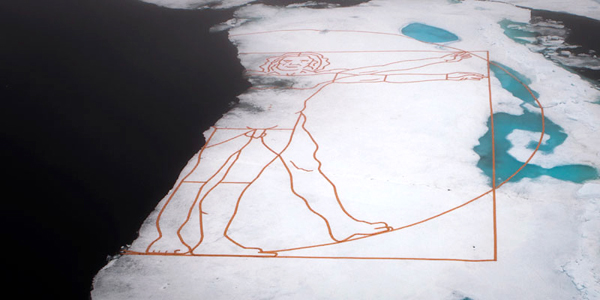
In 2011 his ‘Melting Vitruvian Man’ near the North Pole generated widespread global media attention.
We are Bold NebraskaEducate yourself and those that matter to you. This is our home and we shold be heard. We love our Nebraska political history and take lessons from the past to build a better future. We are Bold Nebraska.Get Involved


